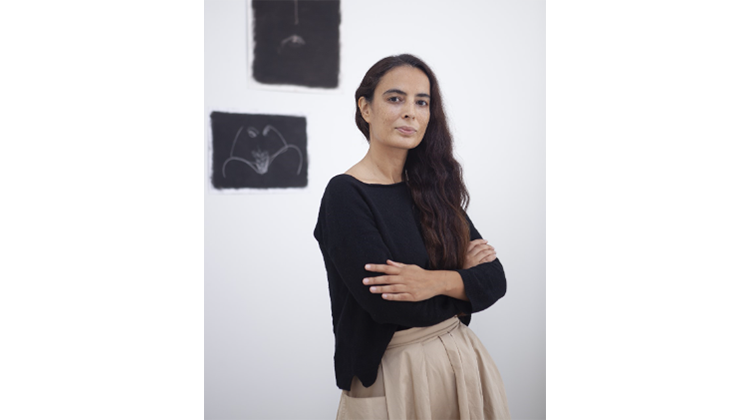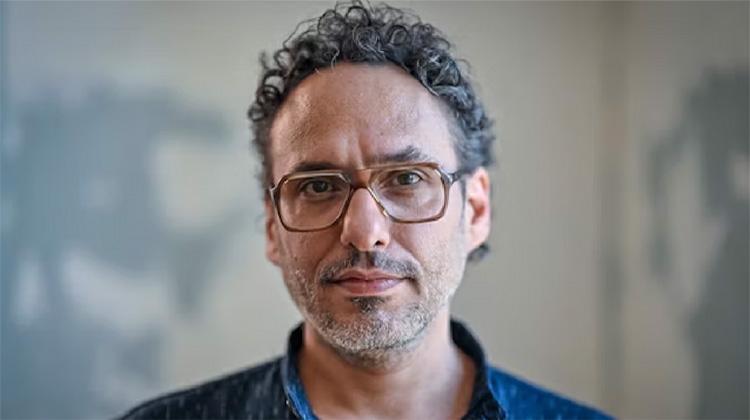Special Subject: Art, Culture, and Technology — Intro to Screen Printing: Manifesting the Multiple
Undergraduate: 4.s37 | Graduate: 4.s33
This hands-on studio class will expose students to the technical skills needed for successful screen printing. Students will produce single and multicolor prints on paper and fabric using a variety of methods.
Introduction to Three-Dimensional Art Work: Textiles, Fashion, and Performative Art
Explores three-dimensional art work, including sculptures and installations, from design to model to finished piece. Addresses challenges associated with design and fabrication, process, context, and relationships between objects, the body, and physical or cultural environments. Lectures, screenings, field trips, readings, and debates supplement studio practice.
The class will introduce students to the foundations of volume and sculpture centered around the human body and embodied experiences. Through research and design experiments, the class will explore structures, design and movement for the body inspired by nature (ie. flora, leaves, wings and insects).
Students are invited to propose subjects and themes to develop individually and collectively.
Activities are based on core elements in the creation of a performance and will be categorized into the following four program activity areas history and research; presentation design: costume/garment/wearable sculpture design and construction, and movement vocabulary; production design: theater and performance strategies with visual arts; and strategic planning: site specific logistics.
The project will focus on 4 areas (listed below) and will develop specific activities based on those areas. Participants will develop innovation and creativity skills, develop and implement collaboration strategies, develop thematic design skills, and learn costume/garment construction skills.
4.322/4.323 Syllabus (MIT Certificate protected)
Special Subject: Art, Culture and Technology — Art and Agriculture
Annexation, greenwashing, and destructive notions of progress have all but wiped out the memory of an indigenous mythology once deeply rooted in an embodied, balanced stewardship of nature. How can the merging of artistic methodologies with agricultural practices address this loss of cultural capital?
Common Ground is a transdisciplinary experiment in learning from the land, seeking to develop a new field of inquiry at the intersection of art, science and agriculture. The history of art is also a history of agriculture, marking humanity’s complex relationship with the environment. This course will examine historic typologies of indigenous architectural and agrarian technologies, bringing them into conversation with contemporary techno-scientific and artistic discourses. Through this synthesis, our class will explore artistic methods to decolonize the social, political, economic and narrative structures that govern our relationship to nature. Following the semester, project documentation and research developed over the semester will contribute to a publication.
Applicants from across artistic and scientific disciplines are highly encouraged. Interested students should attend the first class.
Undergraduates are welcome to enroll.
4.s34 Syllabus (MIT Certificate protected)
Special Subject: Art, Culture, and Technology — Documentary Production: from classic to hybrid & interactive
UG: 4.s30 | G: 4.s32
Students will learn the basics of capturing documentary footage and sounds in real world scenarios. Learn to navigate the ethics and complexities of capturing “reality” and depicting real people and representing “truth”.
Students will learn how to edit for the desired final product, be it a film or alternative medium such as interactive, web, installation, location intervention and more.
From Robert Flaherty (Silent Era) to John Grierson (British Model) to Morin & Rouch (Cinema Verite) to George Stoney (Community Engagement) to Errol Morris (Epistomological Interview) to Adam Curtis (Journalistic Essay), learn the history and context of documentary and the various ways people have attempted to represent the real world, including newer hybrid forms that mix fiction and non-fiction and non-linear interactive works.
Students will produce a documentary short on the subject and in the medium of their choice.
Introduction to Artistic Experimentation
Introduces artistic practice and critical visual thinking through three studio-based projects using different scales and media, for instance, "Body Extension," "Shaping Time," "Public Making," and/or "Networked Cultures." Each project concludes with a final presentation and critique. Students explore sculptural, architectural, performative artistic methods; video and sound art; site interventions and strategies for artistic engagement in the public realm. Lectures, screenings, guest presentations, field trips, readings, and debates supplement studio practice. Also introduces students to the historic, cultural, and environmental forces affecting both the development of an artistic vision and the reception of a work of art.
Advanced Workshop in Artistic Practice and Transdisciplinary Research: Topics in Biological Arts, Ethics, and Automation
4.314 U / 4.315 G
Examines artistic practice as a form of critical inquiry and knowledge production. Offers opportunity to develop art as a means for addressing the social, cultural, and ecological consequences of technology, to build bridges between industry and culture, and to challenge the boundaries between public and private, and human and non-human. Provides instruction in evaluating models of experimentation, individual research, and collaboration with other disciplines in the arts, culture, science, and technology. Supports the development of individual and collective artistic research projects. Additional work required of students taking the graduate version.
Bioart is an interdisciplinary field that explores the intersection of art and biology, bridging the gap between science, technology, and artistic expression. This graduate-level course introduces students to the theoretical foundations and practical techniques of bioart, fostering creativity, critical thinking, and ethical considerations in the creation of bio-inspired artworks. Through a combination of theoretical discussions, hands-on bio lab work, studio practice, and guest lectures from experts in the field, students will gain a deep understanding of the historical context, ethical implications, and cutting-edge applications of bioart including DNA origami and Tissue printing.
Course Objectives:
- Understand the historical context and evolution of bioart as an art form.
- Explore the ethical considerations and social implications of bioart.
- Acquire practical skills and techniques for creating bio-inspired artworks.
- Engage in critical discussions on the intersection of art and biology.
- Collaborate with peers to develop innovative bioart projects.
- Analyze and interpret bioartworks from various perspectives.
- Develop a strong foundation for future research in bioart.
4.314/4.315 Syllabus (MIT Certificate protected)
Art, Culture, and Technology Studio
Explores the theory and criticism of intersections between art, culture, and technology in relation to contemporary artistic practice, critical design, and media. Students consider methods of investigation, documentation, and display and explore modes of communication across disciplines. Students develop projects in which they organize research methods and goals, engage in production, cultivate a context for their practice, and explore how to compellingly communicate, display, and document their work. Regular presentation and peer-critique sessions, as well as reviews involving ACT faculty and fellows, and external guest reviewers provide students with ample feedback as their projects develop.
Thesis II: SMACT Thesis Preparation
Aids students in the selection of a thesis topic, development of an approach method, preparation of a proposal that includes an outline for their thesis. Explores artistic practice as a method of critical inquiry and knowledge production/dissemination. Students examine artist writings and consider academic formats and standards. Regular group meetings, including peer reviews, are supplemented by independent study and individual conferences with faculty.




